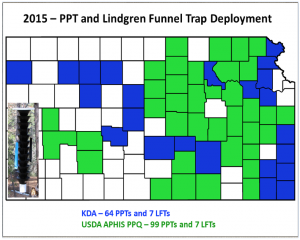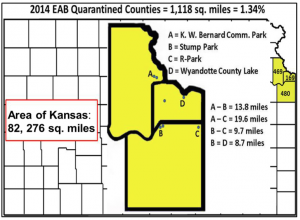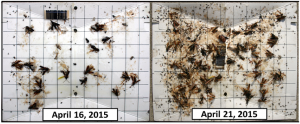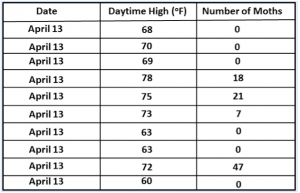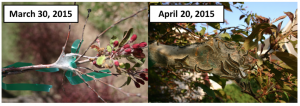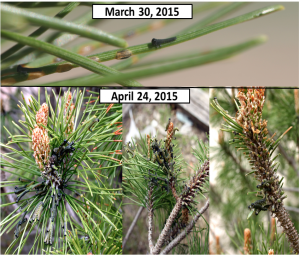—by Dr. Bob Bauernfeind
The KDA has recently issued a brief news release on the 2015 deployment of traps for the detection of Emerald ash borers in Kansas. This is a cooperative effort between two regulatory agencies: Federal United States Department of Agriculture APHIS-PPQ, and the Kansas Department of Agriculture’s Division of Plant Protection and weed Control.
The majority of traps will be the familiar purple prism traps. Additionally in 2015, Lindgren Funnel Traps (LFTs — inserted image, left side of above map) will also be used —- those traps will be green-in-color as opposed to the pictured black LFT.
Within Kansas: Emerald ash borers have been documented in 3 (currently quarantined) counties: Leavenworth, Wyandotte and Johnson. EAB are relatively restricted within those contiguous counties.
